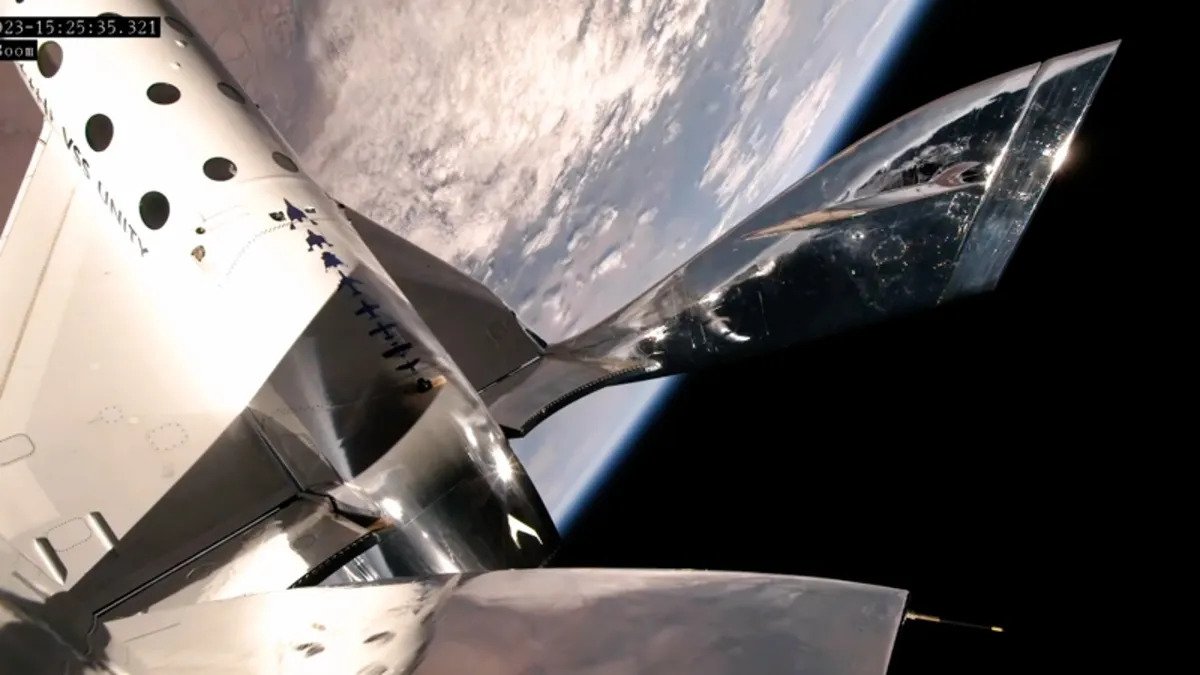Virgin Galactic launched the bones of ancient people into space. This happened during the third suborbital flight of the Unity rocket plane. This event was dedicated to the eternal aspiration of mankind to reach space.

Ancient bones flew into space
A two-million-year-old collarbone and a 250,000-year-old thumb bone flew into space at an altitude of 88.5 km above the Earth’s surface. They were carried by Timothy Nash in his pocket and in an airtight container. Timothy was one of three Virgin Galactic customers who took off on the Unity rocket plane from the carrier aircraft on September 8.
“The magnitude of being among the first civilians going into space, and carrying these precious fossils, has taken a while to sink in, during all of the preparations for the flight,” Nash said in a statement, “But I am humbled and honored to represent South Africa and all of humankind, as I carry these precious representations of our collective ancestors, on this first journey of our ancient relatives into space.”
Which bones flew into space
One of the fossils sent into space is a collarbone belonging to the skeleton of an ancient boy. It was discovered in an area near Johannesburg, known as the cradle of humanity in 2008. It was found by Matthew Berger, who was only nine years old at the time. The fossil is related to a hominin species known as Australopithecus sediba. Its representatives, according to the researchers, walked on two legs, but also had behavior similar to monkeys. They lived about two million years ago.
The second, much younger fossil that went into space last week was a 250,000-year-old thumb bone. It belongs to a representative of the species Homo naledi, which was discovered in late 2013 — early 2014 as part of the largest excavations of our time. During them, 1,550 specimens were found.
Representatives of this species had monkey shoulders, but their teeth, arms, legs and brains were very similar to human ones, and they even carved symbols and made tools. In the caves where they were found, there are signs of labor and art.
Gratitude to the ancestors
The carrying of these fossils into space was a way for humanity to express its gratitude to the ancestors. Lee Berger, a paleoanthropologist at the University of the Witwatersrand in Johannesburg in South Africa, who was directly involved in the discovery of both fossils, expressed the following opinion about this:
“Without their invention of technologies such as fire and tools, and their contribution to the evolution of the contemporary human mind, such extraordinary endeavors as spaceflight would not have happened.”
“These fossils represent individuals who lived and died hundreds of thousands of years ago, yet were individuals who likely gazed up at the stars in wonder, much as we do,” Matthew Berger, who carried the fossils from their home in South Africa and handed them to passenger Nash in a brief ceremony prior to launch, said in the same statement. “I imagine they never could have dreamed while alive of taking such an incredible journey as ambassadors of all of humankind’s ancestors.”
In the near future, Virgin Galactic plans to continue launching about one tourist flight per month, and in the coming years it will be possible to do it even faster. In 2026, Virgin Galactic plans to open flights of its new Delta space plane, which is designed to carry out one mission every week.
According to www.space.com.
Follow us on Twitter to get the most interesting space news in time
https://twitter.com/ust_magazine
